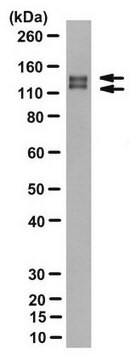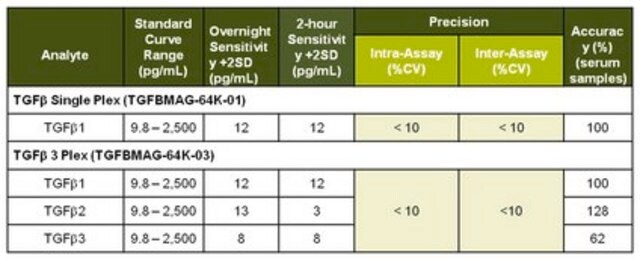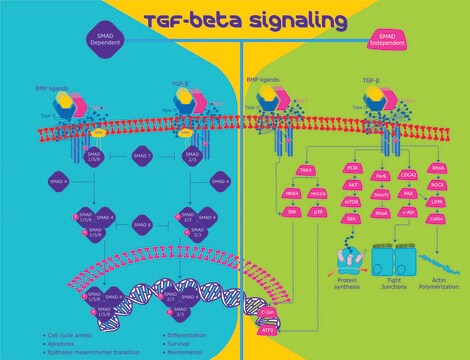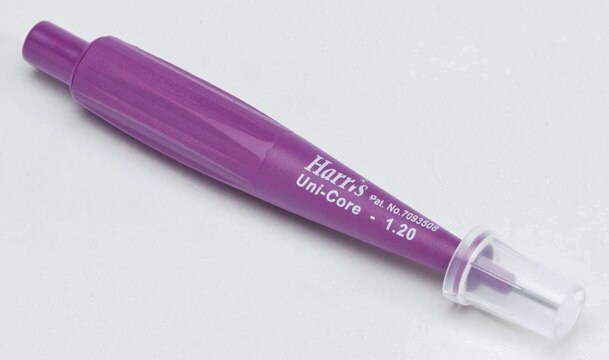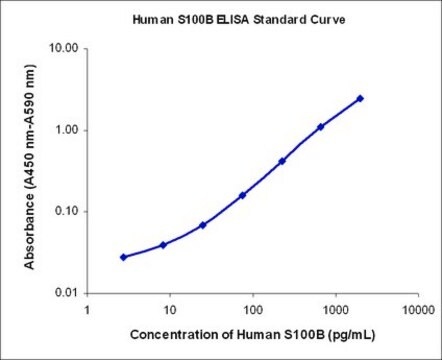MABC1126
Anti-EGFRvIII mutation Antibody, clone L8A4
clone L8A4, from mouse
Synonym(e):
Epidermal Growth Factor Receptor vIII
About This Item
Empfohlene Produkte
Biologische Quelle
mouse
Antikörperform
purified immunoglobulin
Antikörper-Produkttyp
primary antibodies
Klon
L8A4, monoclonal
Speziesreaktivität
human
Verpackung
antibody small pack of 25 μg
Methode(n)
ELISA: suitable
flow cytometry: suitable
immunocytochemistry: suitable
immunohistochemistry (formalin-fixed, paraffin-embedded sections): suitable
western blot: suitable
Isotyp
IgG1κ
NCBI-Hinterlegungsnummer
UniProt-Hinterlegungsnummer
Posttranslationale Modifikation Target
unmodified
Allgemeine Beschreibung
Spezifität
Immunogen
Anwendung
Apoptose & Krebs
Immunohistochemistry (Paraffin) Analysis: A representative lot detected EGFRvIII mutation in Immunohistochemistry applications (Mellinghoff, I.K., et. al. (2005). N Engl J Med. 353(19):2012-24; Sok, J.C., et. al. (2006). Clin Cancer Res. 12(17):5064-73).
Immunohistochemistry Analysis: A representative lot detected EGFRvIII mutation in Immunohistochemistry applications (Wikstrand, C.J., et. al. (1998). J Neuroviral. 4(2):148-58; Wikstrand, C.J., et. al. (1995). Cancer Res. 55(14):3140-8).
ELISA Analysis: A representative lot detected EGFRvIII mutation in ELISA applications (Wikstrand, C.J., et. al. (1998). J Neuroviral. 4(2):148-58; Wikstrand, C.J., et. al. (1995). Cancer Res. 55(14):3140-8).
Flow Cytometry Analysis: A representative lot detected EGFRvIII mutation in Flow Cytometry applications (Wikstrand, C.J., et. al. (1998). J Neuroviral. 4(2):148-58; Wikstrand, C.J., et. al. (1995). Cancer Res. 55(14):3140-8).
Immunocytochemistry Analysis: A representative lot detected EGFRvIII mutation in Immunocytochemistry applications (Wikstrand, C.J., et. al. (1998). J Neuroviral. 4(2):148-58; Batra, S.K., et. al. (1995). Cell Growth Differ. 6(10):1251-9).
Qualität
Western Blotting Analysis: 1 µg/mL of this antibody detected EGFRvIII mutation in NR6 cells expressing human EGFRvIII (NR6M).
Zielbeschreibung
Physikalische Form
Lagerung und Haltbarkeit
Handling Recommendations: Upon receipt and prior to removing the cap, centrifuge the vial and gently mix the solution. Aliquot into microcentrifuge tubes and store at -20°C. Avoid repeated freeze/thaw cycles, which may damage IgG and affect product performance.
Sonstige Hinweise
Haftungsausschluss
Sie haben nicht das passende Produkt gefunden?
Probieren Sie unser Produkt-Auswahlhilfe. aus.
Lagerklassenschlüssel
12 - Non Combustible Liquids
WGK
WGK 2
Flammpunkt (°F)
Not applicable
Flammpunkt (°C)
Not applicable
Analysenzertifikate (COA)
Suchen Sie nach Analysenzertifikate (COA), indem Sie die Lot-/Chargennummer des Produkts eingeben. Lot- und Chargennummern sind auf dem Produktetikett hinter den Wörtern ‘Lot’ oder ‘Batch’ (Lot oder Charge) zu finden.
Besitzen Sie dieses Produkt bereits?
In der Dokumentenbibliothek finden Sie die Dokumentation zu den Produkten, die Sie kürzlich erworben haben.
Unser Team von Wissenschaftlern verfügt über Erfahrung in allen Forschungsbereichen einschließlich Life Science, Materialwissenschaften, chemischer Synthese, Chromatographie, Analytik und vielen mehr..
Setzen Sie sich mit dem technischen Dienst in Verbindung.